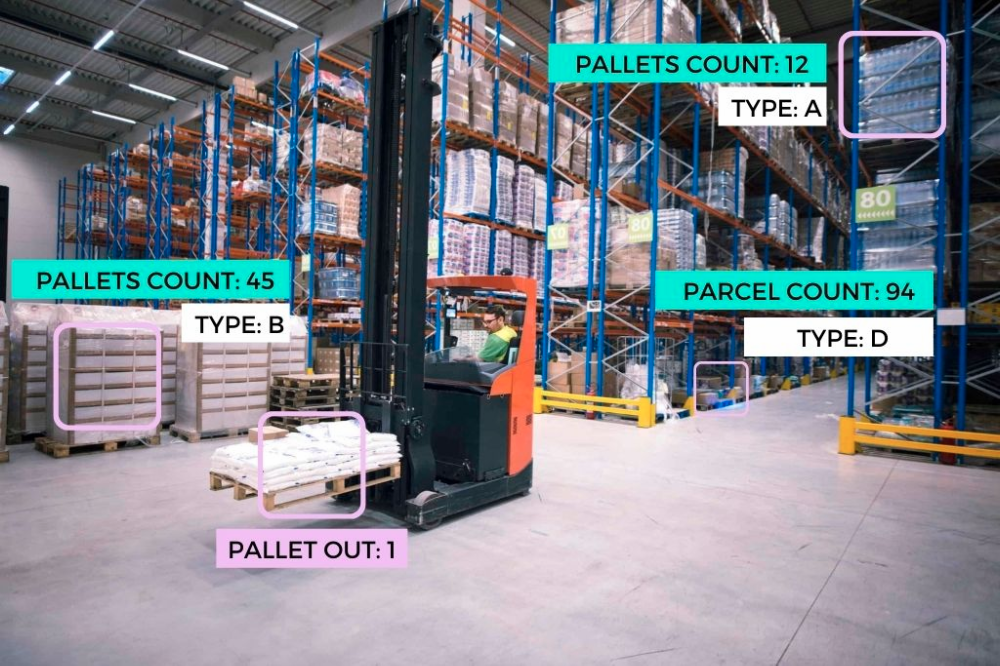Inventory plays a key role in every manufacturing and e-commerce company.
This aspect of running a trading business significantly influences cash flow,
financial performance, and growth possibilities. That’s why more and more
manufacturing and e-commerce companies decide to opt for inventory
management using computer vision.
What are the benefits of such a computer vision solution? And why can we say
that inventory management using computer vision is the future? Let’s find out!
Inventory management is a complex and difficult task, especially for companies
operating more than one warehouse and stores selling thousands of products
per month.
E-commerce companies frequently struggle with order mix-ups, dead stock
issues, insufficient stock levels, and warehouse disorder. On top of that, the
human factor can also be a source of problems. Even if your WMS (Warehouse
Management System) works correctly, your warehouse staff can, for example,
put a given product on the wrong shelf. Such an initially unnoticeable mistake
can lead to severe consequences, just to mention order mix-ups.
If you run a manufacturing company or an online store, we believe that
inventory management using computer vision is an answer to your problems. In
this article, we are going to show you how inventory management using
computer vision can improve your business.
Today, computer vision in inventory management is used to optimize stock
levels, prevent dead stock, and improve customer experience (CX). How does it
work in practice?
Product tracking
Order and product mix-ups is a real thing that happens even in large and
experienced companies. Partly the solution lies in the WMS system that’s
effective and fully tailored to your needs. However, in many instances, that’s
only a partial solution. If you’re struggling with warehouse-related mistakes,
think of adopting AI and Computer Vision.
For instance, you can teach your AI algorithms to understand the way your
warehouse operates, mainly–where the products from each category are and
should be stored.
This way, it’s much simpler to track all of your products and orders. Thanks to
Computer Vision & AI, every parcel can be verified for compliance with the
order, minimizing the order mix-up issue. And this aspect of your inventory
management also improves CX!
Optimizing inventory management
Inventory optimization plays an essential role in every manufacturing/e-
commerce company operating in various locations and running more than one
warehouse.
Inventory management using computer vision can help you apply various
optimization strategies that can be adjusted to consider your specific company’s
conditions and needs. After all, you must remember that there are many
different variables that delay product delivery:
- Where the products are stored and how
- What’s your picking and packing strategy
- How shipping works in your company
- How many employees are engaged in preparing orders
Computer vision can help you with each one of these questions. In fact, we can
say that inventory management using computer vision is, by far, the most
efficient way to manage your inventory.
Stock predicting
Over and under-stocking can be a severe problem. If you have too many
products, your inventory piles up without a purpose. On the other hand, if you
have an insufficient amount of products, your customers are dissatisfied, your
cash flow is endangered, and your image is exposed to risk. Computer vision
can help you predict demanded stock levels that will match the number of
orders. How is that possible?
Thanks to historical data and predictive analytics. Computer vision algorithms
can analyze your past orders and assess future sales levels.
As a result, you don’t have to worry about inaccurate stock levels. And
predictive analytics even can determine when extra supplies will be needed at
certain times of the year. For example, there are two busy periods in the
retail/e-commerce industry–Black Friday/Cyber Monday and Christmas. During
these commerce holidays, the sales levels in online stores are typically much
higher than during the rest of the year.
Furthermore, stock predicting can help you avoid the dead stock problem. Dead
stock is a serious threat!
It can ruin your performance and cash flow. What is dead stock all about? When
you order too many products that you can’t sell, they start piling up in your
warehouse. If these products have a short expiration date (e.g., FMCG
products) or get quickly outdated (e.g., electronics, sports equipment) shortly,
they become unsellable. They become dead stock. Stock predicting can help
you avoid this problem.
Improving user experience (UX)
It’s a resultant of the aforementioned aspects of inventory management using
AI and Computer Vision. When your warehouse operates flawlessly, your
supply chain is effective, and there are no order mix-ups, your customers are
satisfied. They get their products on time, and they receive exactly what they
ordered. This seemingly obvious aspect of running a retail company can
significantly improve the user experience in your company!





